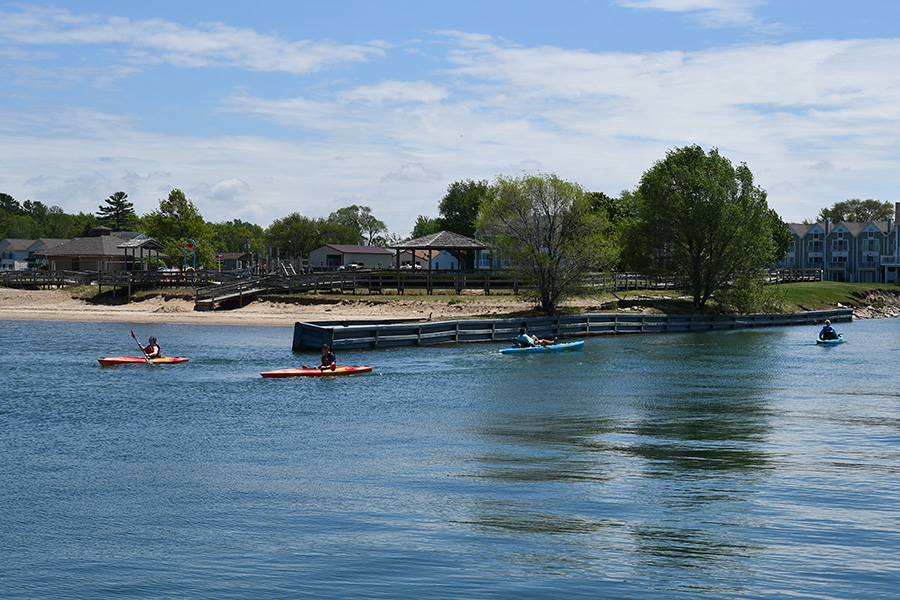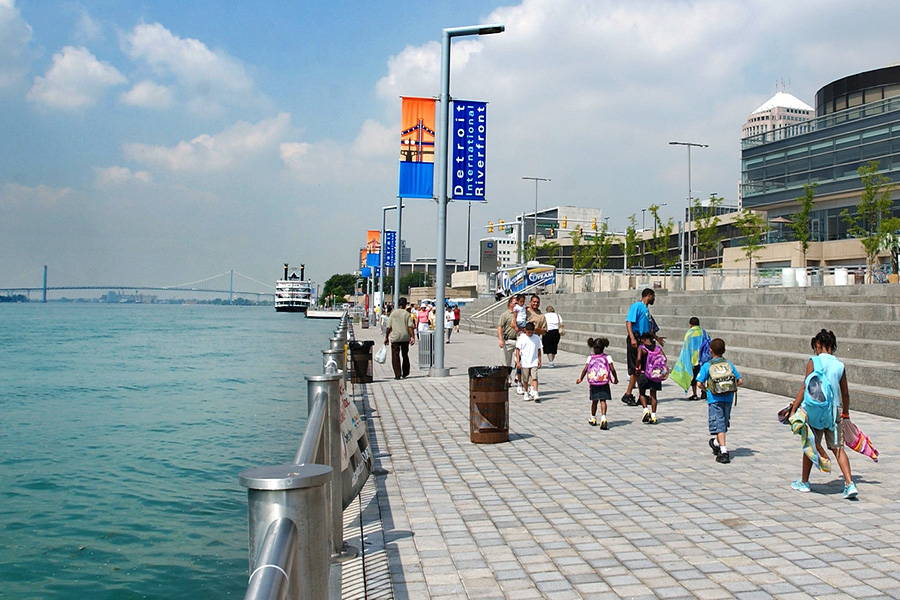Water quality concerns and actions addressed during Water School Webinar Series
Local decision-makers play a key role in managing and protecting the water quality of our freshwater resources.

Water quality means different things to different people. The definition of water quality really depends on the intended use of the water, whether that use might be fishing, swimming, drinking or perhaps just for aesthetics. For example, if you are an angler, a lake with more algae may support more fish, but for communities who use surface water as their drinking water source, the less algae the better. Thus, water quality is generally defined as the condition of water in relation to the needs of biota and/or humans. Water quality issues across the state are featured in the second lecture and panel discussion of Michigan State University Extension’s Water School Webinar Series, following the first lecture on water quantity. Viewers will learn about the quality of water in our Great Lakes, inland lakes and streams, wetlands, and groundwater and what communities can do to address concerns that may arise.
Why does water quality matter?
Whether it is environmentally, economically or health related, water quality issues can affect you and the community in which you live. Safe and healthy habitat encourages wildlife and promotes a good fishery. Property values often reflect water quality conditions and increase when the quality of the water appears good. Water quality can also affect beach access, recreational activities and consumption of fish.

What affects the quality of water?
Have you ever wondered where all that rain and melting snow goes when it washes down the drain in the parking lot? Or, what happens to soil particles and pollutants that come off the landscape when it rains? In most cases, the water and the pollution it may carry make their way to the lowest point in the landscape, often a water body such as a lake, stream or wetland. The land area that drains to a water body is the watershed, and depending on the land use, the type and amount of pollutants entering the water will vary. Water School localizes the presentations so that participants can look at the different land uses within their own watershed and get a better idea of potential problem areas.
Many other factors can negatively impact water quality. Water School discussions address nutrient pollution, climate change, invasive species, harmful algal blooms, microplastics and PFAS chemicals in the environment.
What can communities and local officials do to protect water quality?

Managing and protecting water resources often happens at the local level. To protect water quality, communities and local officials can advocate and implement best practices, such as vegetative buffers along all waterways to reduce runoff pollution and erosion. Local leaders can also establish zoning ordinances that encourage implementing low impact development into design plans to reduce water runoff or require additional erosion control measures during construction.
Ordinances can also address other forms of pollution. For example, a septic system ordinance requiring a local inspection of septic systems by trained employees prior to the sale of the property is a common approach to address bacteria, virus and nutrient pollution. To protect groundwater supplies, communities can be part of a wellhead protection program by delineating and providing protection to the wellhead area. These practices as well as others are discussed during Water School using research results and local case studies.
The Water School Water Quality webinar includes a panel discussion with experts from The Michigan Nature Conservancy, Friends of the Rouge, and MSU Extension discussing critical questions about water quality, including:
- What are the most pressing water quality issues in your area?
- How can local planners and officials prepare for increased volatile storms and higher temperatures resulting from climate change?
- What practices are best for addressing stormwater?
- How could money be allocated differently to help with flooding and stormwater infrastructure issues?
MSU Extension Water School Webinar Series
The Water Quality webinar is the second webinar in the MSU Extension Water School Webinar Series. The program was developed by Michigan Sea Grant and MSU Extension as a policy-neutral, fact-based program. In 2020, this program was moved to an online webinar series to provide decision-makers with critical, relevant information needed to make sound water choices. View this four-part webinar series to learn more about water quantity, quality, finance, policy, planning and economics in Michigan.
Take a deeper dive into these topics to learn how you can impact Michigan’s largest resource. The webinar series is free to all and contains additional resources, webinar FAQs and the Water Policy Toolbox. The toolbox is a document that provides links to information and laws about water-related programs implemented at different levels of government. Check out all these resources here.
If you would like to be notified of upcoming Michigan Water School events, please fill out this short survey.



 Print
Print Email
Email